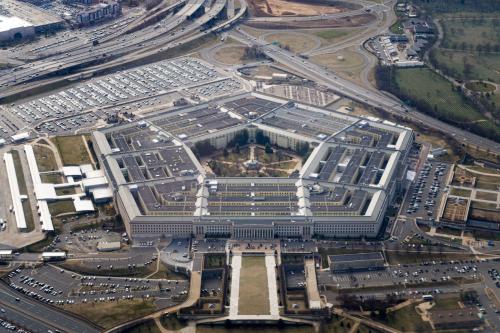During the Cold War, defense planners continuously assumed the need to prepare for a possible major war against the Warsaw Pact plus at least one other conflict at a time. After the Cold War, the big scenario went away, and U.S. ground forces were sized and shaped primarily to maintain what was called a two-regional-war capability. The wars were assumed to begin in fairly rapid succession (though not exactly simultaneously), and then overlap, lasting several months to perhaps a year or two.
Three administrations — George H.W. Bush, Bill Clinton and George W. Bush, and five defense secretaries — Dick Cheney, Les Aspin, William Perry, William Cohen and Donald Rumsfeld — endorsed some variant of it. And to some extent, they were all vindicated in recent years as the nation fought two overlapping regional conflicts, even if one of them was, in Richard Haass’ memorable phrase, a “war of choice.” To date, the Obama administration has stuck with such thinking.
Its 2010 Quadrennial Defense Review report states that, after successfully concluding current wars, “In the mid- to long term, U.S. military forces must plan and prepare to prevail in a broad range of operations that may occur in multiple theaters in overlapping time frames. This includes maintaining the ability to prevail against two capable nation-state aggressors.” And this fall, Defense Secretary Leon Panetta repeated this planning assumption.
But a two-land-war capability is no longer appropriate for the age of austerity. A “1+2” framework for sizing ground combat forces is a better way. It is prudent because it assumes that ground war is not obsolete, however much we might like to think so. It also provides additional capability if the nation again engages in a major conflict, providing a combat cushion should that war go less well than hoped.
Yet it is also modest, economical and cognizant of the economic challenges to American power that exist today. It assumes only one such conflict at a time, and it does not envision major ground wars against the world’s major powers on their territories.
More specifically, if there ever was a conflict pitting the United States against China or Iran, it is reasonable to assume the fighting would be in maritime and littoral regions. The most plausible threat that China would pose is to Taiwan, or perhaps to neighboring states over disputed sea and seabed resources. The most plausible crisis involving Iran would relate either to its nuclear program or to its machinations in and about the Persian Gulf waterways.
We would benefit from having enough ground capability to overthrow the Iranian regime in extremis, should it ever dramatically escalate its terrorism activities, for example. But it is beyond our plausible means, and it is not necessary, to plan for a possible occupation of Iran, so that scenario can be dispensed with (as indeed it already has been by American military planners) It is reasonable for the United States to have the capability for just one ground war at a time, as long as it can respond in other ways to other simultaneous and overlapping challenges abroad.
This proposal should not lead to a dramatically smaller ground force. Having the capacity to wage one major regional war with some added degree of insurance should things go wrong, while sustaining two protracted, if smaller, deployments, is only modestly less demanding than fighting two regional wars at once. But today’s world does not allow a prudent decision to adopt a less-demanding strategic construct or smaller force.
This one-war response capability needs to be highly effective to compensate for its modest size. That has implications in areas such as strategic transport, and for the National Guard and reserves. They remain indispensable and have done well in Iraq and Afghanistan, and merit substantial support.
But they cannot carry out prompt deployments to crises or conflicts the way that current American security commitments and deterrence strategy require. As such, we should not move to a “citizens’ army” that depends on reservists for national defense.
Translating this new strategy — one war, plus several smaller missions — into force planning should allow ground forces to be cut by roughly 15 percent, but not a lot more than that. Ground forces might return to 1990s levels or slightly lower, but an active Army of 450,000 troops and an active-duty Marine Corps of 160,000 would remain necessary.
This force could sustain about 20 combat brigade teams overseas indefinitely (about a dozen are now in Afghanistan), and to surge 25 to 30 if need be.
If the U.S. found itself in a major operation, it could and should begin to reverse these cuts immediately; building up larger active ground forces as a hedge against the possibility the new operation (or additional ones) could prove longer or harder than anticipated.
The broader point is this: While defense cuts are appropriate as part of broad-based deficit reduc¬tion, they can neither be done mindlessly nor pushed to the extremes that some contemplate and that sequestration would require. It is incumbent on policymakers to change that nightmare scenario, and preferably to do so in 2012, before our deterrence abroad weakens. Still, major change is needed in light of the economic threats to America’s long-term power. And a one-war capability for our ground forces is the right way to go.

Commentary
Op-edEnd Two-War Planning For U.S. Ground Forces
December 19, 2011